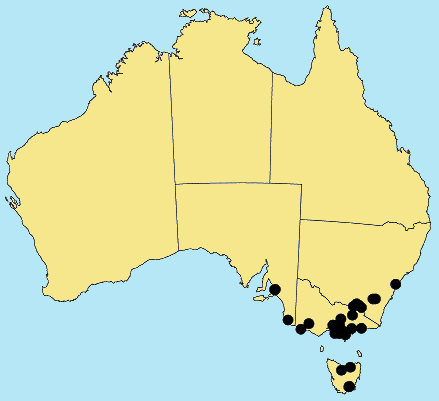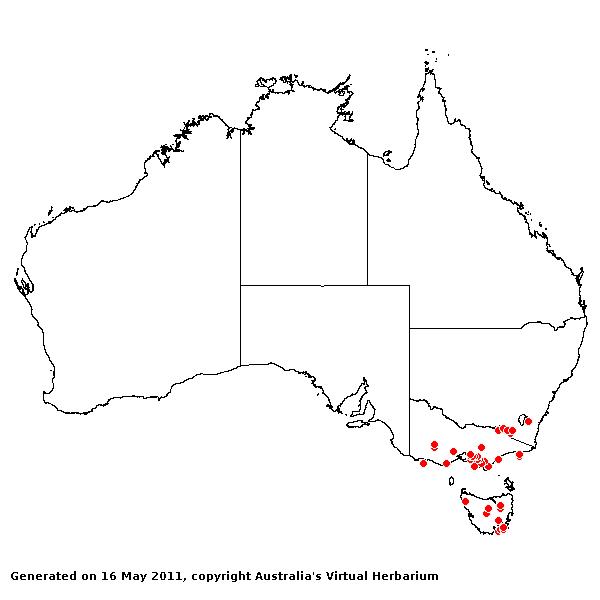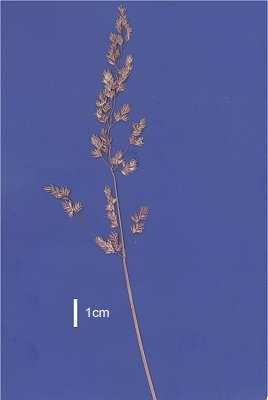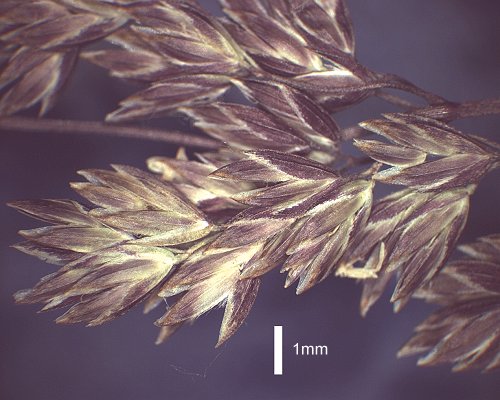Poa trivialis*
L. Sp. Pl. 67 (1753).
Classification. (GPWG 2001) : Subfamily Pooideae.
Tribe Poeae.
Type of Basionym or
Protologue Information: NT: Hudson 16, (LINN-87.9). NT designated by
Soreng in Cafferty et al., Taxon 49(2): 256 (2000).
Key references
(books and floras): [2002] D.Sharp & B.K.Simon, AusGrass, Grasses of
Australia, [2008] S.W.L.Jacobs, R.D.B.Walley & D.J.B.Wheeler, Grasses
of New South Wales (355), [2009] A.Wilson (ed.). Flora of Australia,
Vol 44A. Poaceae 2 (311).
Illustrations:
[2008] S.W.L.Jacobs, R.D.B.Whalley & D.J.B.Wheeler, Grasses of New South
Wales, 4th edn (354).
Habit.
Perennial. Stolons present. Culms erect or geniculately ascending or decumbent,
20–101 cm tall, 3–5 -noded. Lateral branches simple. Leaves mostly basal or
cauline. Leaf-sheaths antrorsely scabrous. Ligule an eciliate membrane,
3–7(–10) mm long, abaxially hairy, obtuse or acute. Leaf-blades flat,
(3–)7.5–22 cm long, 1.5–5.2(–6) mm wide. Leaf-blade surface smooth or
scaberulous, glabrous.
Inflorescence.
Inflorescence compound, a panicle. Panicle oblong or ovate, dense or loose or
effuse, 1.1–20 cm long, 1–15 cm wide.
Spikelets.
Spikelets pedicelled. Fertile spikelets many flowered, with at least 2 fertile
florets (2–4), comprising 2–4 fertile floret(s), with diminished florets at the
apex, elliptic or oblong or ovate, laterally compressed, 3–4 mm long.
Glumes. Glumes
similar. Lower glume lanceolate, membranous, keeled, 1-keeled, 1 -nerved. Upper
glume ovate, 2.3–2.9(–3.5) mm long, membranous, keeled, 1-keeled, 3 -nerved.
Florets.
Fertile lemma 2.5–3.5 mm long, keeled, 5 -nerved. Lodicules present. Anthers 3.
Continental
Distribution: Europe, Africa, Temperate Asia, Tropical Asia, Australasia,
North America, South America, and Antarctica.
Australian
Distribution: New South Wales, Victoria, Tasmania.
New South Wales:
Central Coast, Southern Tablelands, South-Western Slopes. Victoria:
Eastern Highlands, Gippsland Highlands, Gippsland Plain, Midlands, Volcanic
Plain, Wannon. Tasmania: North East, Midlands, East Coast, Mt
Wellington.
Notes.
One collection of subsp. sylvicola has been seen. This form is
distinguished by the formation of a series of small globose nodules at the base
of the culm.
Introduced. SE
Australia. Widespread, native to the Mediterranean. An uncommon weed favouring
damp shaded areas. Flowers Nov.-Jan. Fruits Dec.-?.




